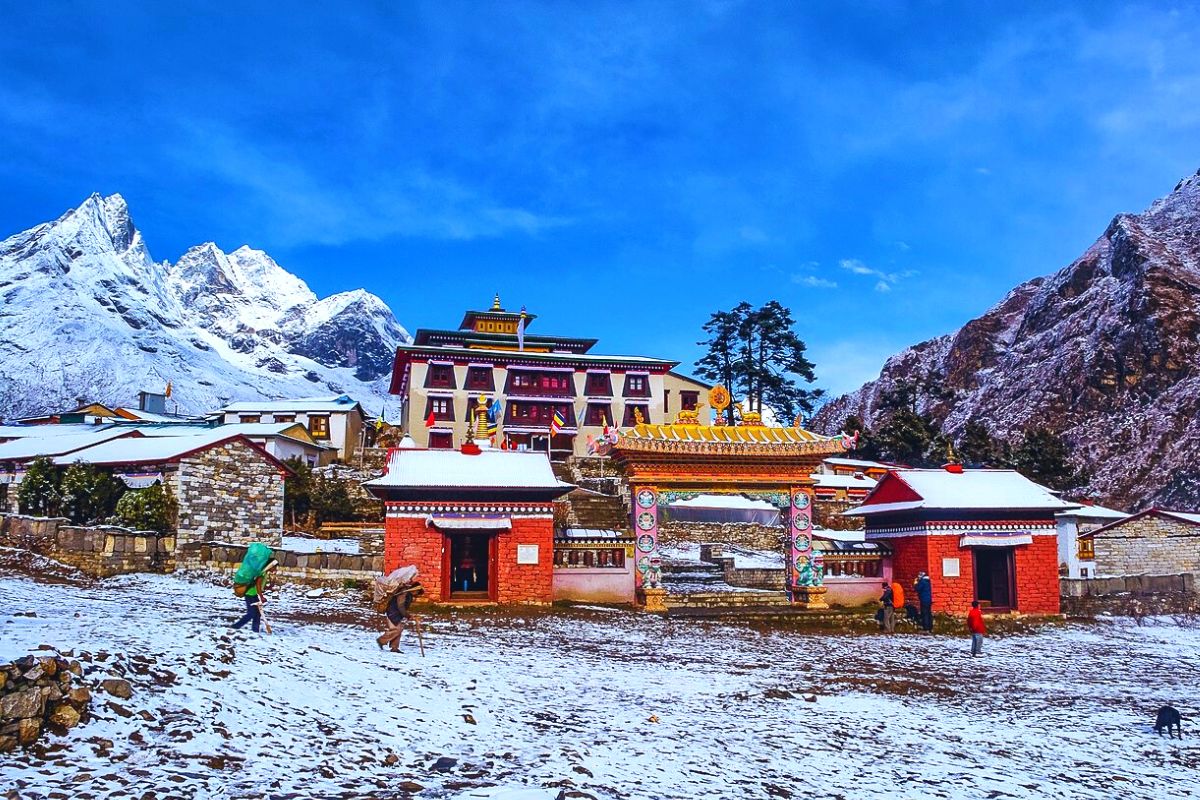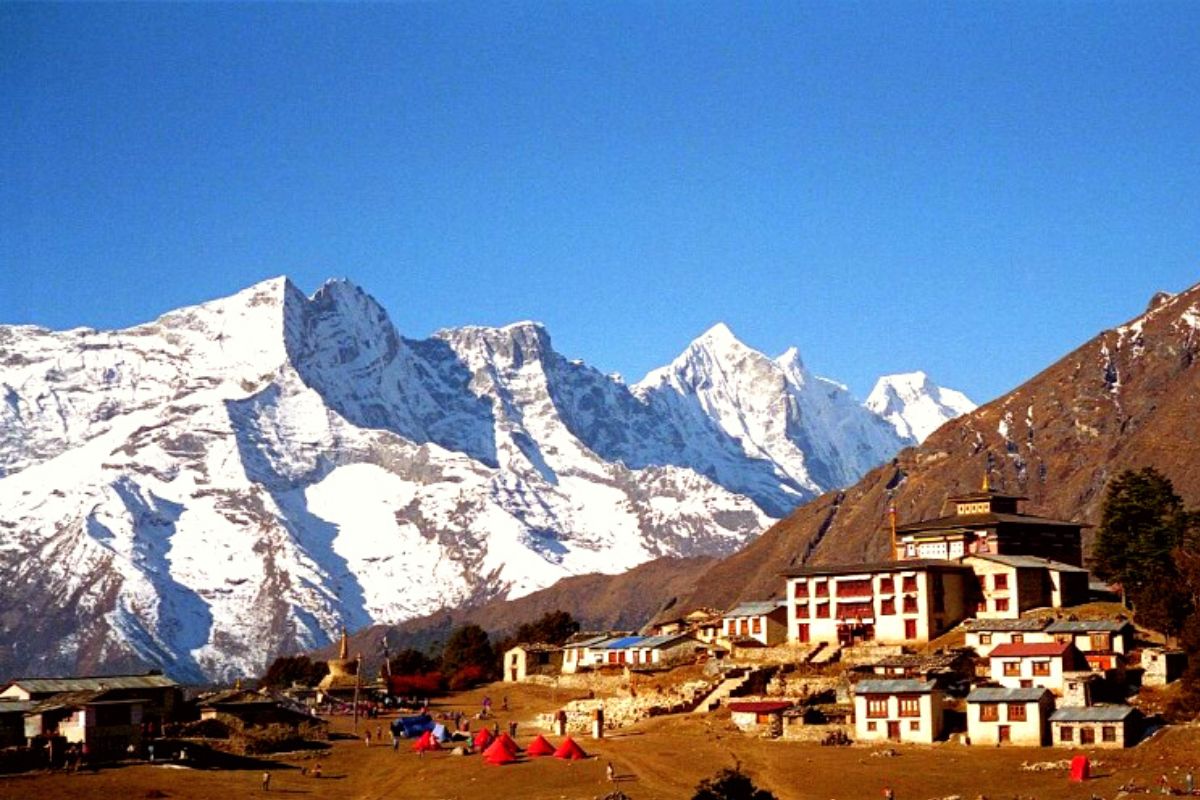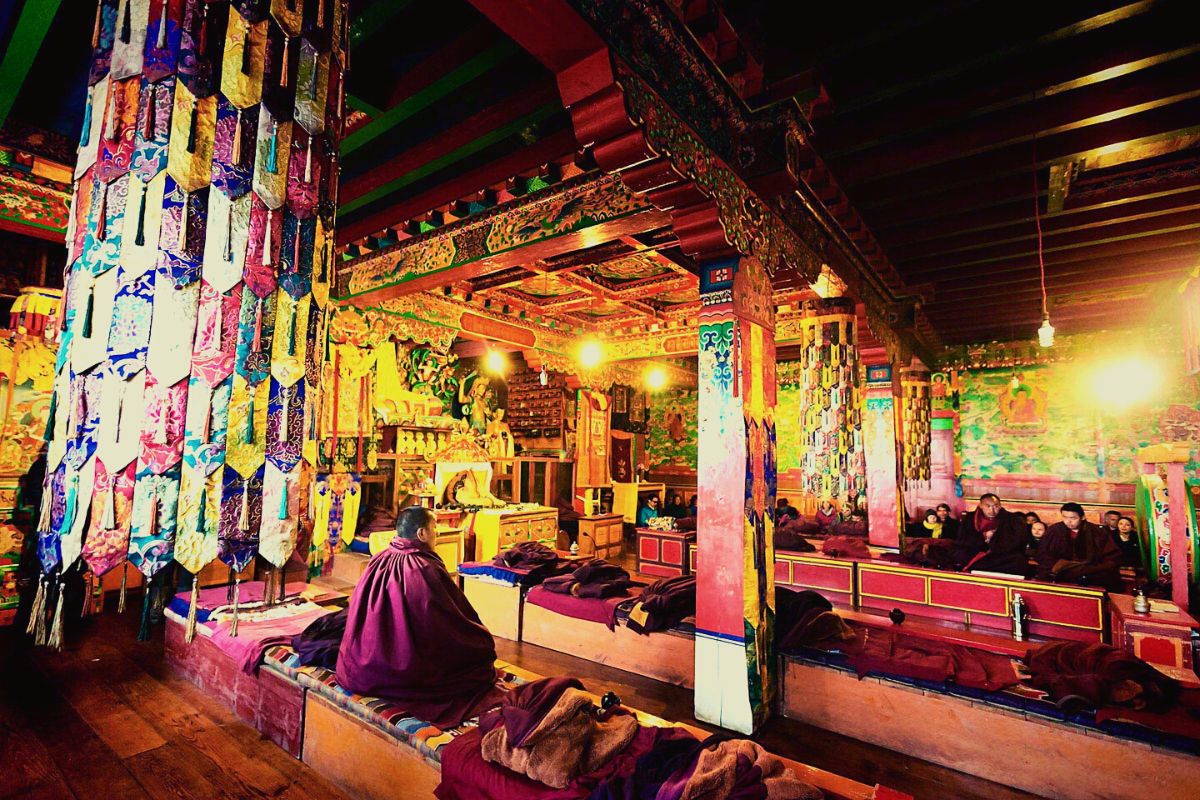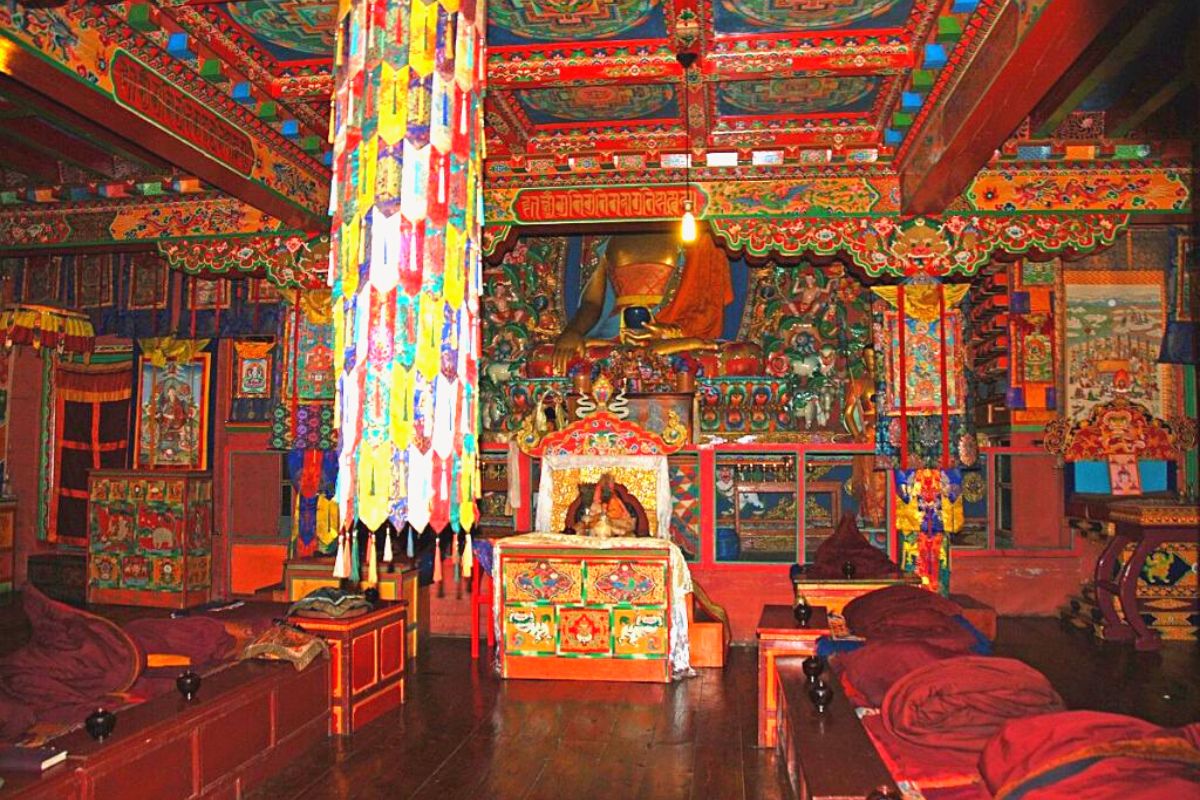
Tengboche Monastery- Unique Tibetan Buddhist Monastery

Tengboche Monastery- Unique Tibetan Buddhist Monastery
swotah travel
6059
25, 12 2022
Tengboche Monastery was founded in 1916 by Lama Gulu. It is linked to the Rongbuk Monastery in Tibet, which is also regarded as its mother monastery. Lama Gulu built the monastery on the site of an ancient hermitage that Tibetan saints had used for centuries.
The Gompa was destroyed twice by the earthquake; in 1934, a massive earthquake struck and deteriorated its building - it was nevertheless rebuilt. Later in 1989, another earthquake demolished the ancient monastery. Several volunteers and international assistants came together to rebuild the Gompa.
Today, Tengboche Monastery is home to hundreds of monks living and working in the monastery's many temples and shrines.
It is located in the middle of a UNESCO World Heritage Site, Sagarmatha National Park. It sits in a perfect landscape with a view of majestic mountains, including famous peaks like Ama Dablam, Tawache, Everest, Nuptse, and Thamserku Lhotse.
Tengboche is a central point of the 'Sacred Sites Trail Project' and is the main attraction of many indoor and outdoor tourists. 'Sacred Sites Trail' revolves around ten monasteries in the region.
How To Reach Tengboche Monastery?
If you are to take a journey to Tengboche Monastery, you will have to leave for Lukla by flight or without it. From Lukla, your next stop will be at Namche Bazaar, which is at 3,440 meters/11,286 feet. You can make your stop there and cherish the beauty of the town before heading to Tengboche Monastery.

After then, you will go to Namche Bazaar and catch the dirt trail. Don't worry about relinquishing your hike since the majestic view of Mount Everest and Ama Dablam at 6,856 meters/22,494 feet and a full-bloomed forest of white rhododendrons will always please your eyes.
The routes are rugged and might be challenging for passive travelers. But the reflection of nature in your eyes will be satisfying. After hours of hiking, you will reach Dudh Koshi River at Phungi Tenga, at 3,250 meters/10,662 feet. Crossing the bridge of Dudh Koshi not only showcases the fast pace of the Koshi tributary but also gives you the vibes of being in the Himalayan Climate as you can see glaciers upwards. The river is itself a glacial melt.
As you pass the Dudh Koshi river, the way gets steeper and steeper. This might be a perfect choice for adventurous trekkers. You will reach the gate of Tengboche Monastery a few hours' walks from there.
At 3,867 meters/12,687 feet, there stands a large rock gate of the Tengboche Monastery, and as you pass through it, you are now in the broad arms of the Gompa. You can find a green grassy area directly ahead of you, and to the left is your destination, Tengboche Monastery: one of the unique Tibetan Buddhist Monastery.
What To Know Before Entering The Monastery?
If you are not able to be in your control and miss the qualities of discipline, then Tengboche Monastery is not your destiny. From dressing sense to your activities around the Gompa comes into great value when you are in the monastery.

The main point is you make sure that you pay a warm homage to Lord Buddha. Also, keep in mind that you are dressed modestly and correctly because the Gompa does not allow travelers with more revealing outfits. Similarly, no one is allowed to make physical contact with the monks, which is taboo in Tibet physically. In addition, you are not supposed to step or stand on the door's threshold since the Buddhists believe it is Lord Buddha's shoulder.
Here are some of the lists of conducts we have prepared for you to know before heading to Tengboche Monastery:
-
Make sure you enclose disciplined activities around the Gompa.
-
Your gesture of praying in Gompa is a crucial factor in your manner.
-
You are not allowed to take photos/videos in restricted areas of the monastery. Follow the instructions provided by your guide or local.
-
Learn to greet Buddhist monks. Please show them some respect.
-
You are supposed to walk in Kora in A Clockwise Manner.
-
Bring offerings to Lord Buddha. Most people bring Weisang (branches of pine trees) and butter oil to the lamps as gifts.
What Can You Learn From Visiting Tengboche Monastery?
If you are interested in Tibetan culture and history, visiting the Tengboche Monastery is a must. The monastery is located in the Tengboche village in Khumjung and was founded in the 14th century. It is one of the largest and most important monasteries of the Gelugpa sect of Tibetan Buddhism.

The monastery is home to hundreds of monks and is an important learning center. The monastery has an extensive library with thousands of manuscripts and books, many of which are rare and valuable. The sanctuary also has a museum with a collection of artifacts from Tibetan history and culture.
A visit to the Tengboche Monastery is an opportunity to learn about Tibetan culture, religion, and the region's history. You can also see beautiful artwork and architecture and meet some friendly monks!
Traditional Tibetan Buddhist Rituals at Tengboche Monastery
Tengboche Monastery is a Tibetan Buddhist monastery in Tibet. The monastery follows the Gelugpa tradition and is home to about 500 monks. The monastery is located in the town of Tebonghe, about 10 kilometers from Lhasa.
The monastery has several traditional Tibetan Buddhist rituals that are performed on a daily basis. These include the recitation of prayers, the performance of puja (worship) ceremonies, and the practice of meditation.
The monks at Tengboche Monastery are also involved in various charitable activities, such as providing medical care to the local community and running a school for children.

Accommodation Facilities Around Tengboche Monastery
Accommodation facilities are not the things to be worried about during the trip to Tebonge Monastery. You can opt for multiple choices for the service; you can bring your own camping tent to stay overnight or rent a room in the local tea houses or homestay.
The initial phase of the trek is amicable - you will stay in a hotel or lodge in Namche Bazaar that provides you with essential services. The idea of camping in a tent or renting teahouses comes after you start your trek to Tengboche Gompa.
The Gompa is at 1,378 feet / 420 meters higher altitude than Namche Bazaar.
An Overview of Tibetan Buddhism
Tibetan Buddhism is the form of Buddhism practiced in Tibet, which combines elements of Indian Vajrayana Buddhism with the indigenous Tibetan religion. Chinese Buddhism and Mongolian Buddhism also influence it. Tibetan Buddhism has a unique character among the various forms of Buddhism due to its geographical isolation and development in a cultural and religious milieu quite different from other Buddhist traditions.
The main difference between Tibetan Buddhism and other types of Buddhism is that Tibetan Buddhists believe in reincarnation. This means that after someone dies, their soul is reborn into another person or animal. Tibetan Buddhists also strongly emphasize meditation and developing a personal relationship with their chosen deity or deities.
One of the most important aspects of Tibetan Buddhist practice is a pilgrimage. Pilgrims travel to holy sites associated with the Buddha or with specific saints and bodhisattvas (enlightened beings). These pilgrimages can be very long and arduous, sometimes taking months or even years to complete.
Tibetan Buddhist monasteries are often located in remote, mountainous regions. The best known is probably the Potala Palace in Lhasa, Tibet, which was the home of Dalai Lamas for centuries. Other well-known monasteries include Tashi Lhunpo Monastery, Samye Monastery, and Ganden Monastery.
NEWSLETTER SIGNUP
Sign up to receive our trip ideas and travel offers!
Get updates and Exclusive Offers up to 20% Discount








